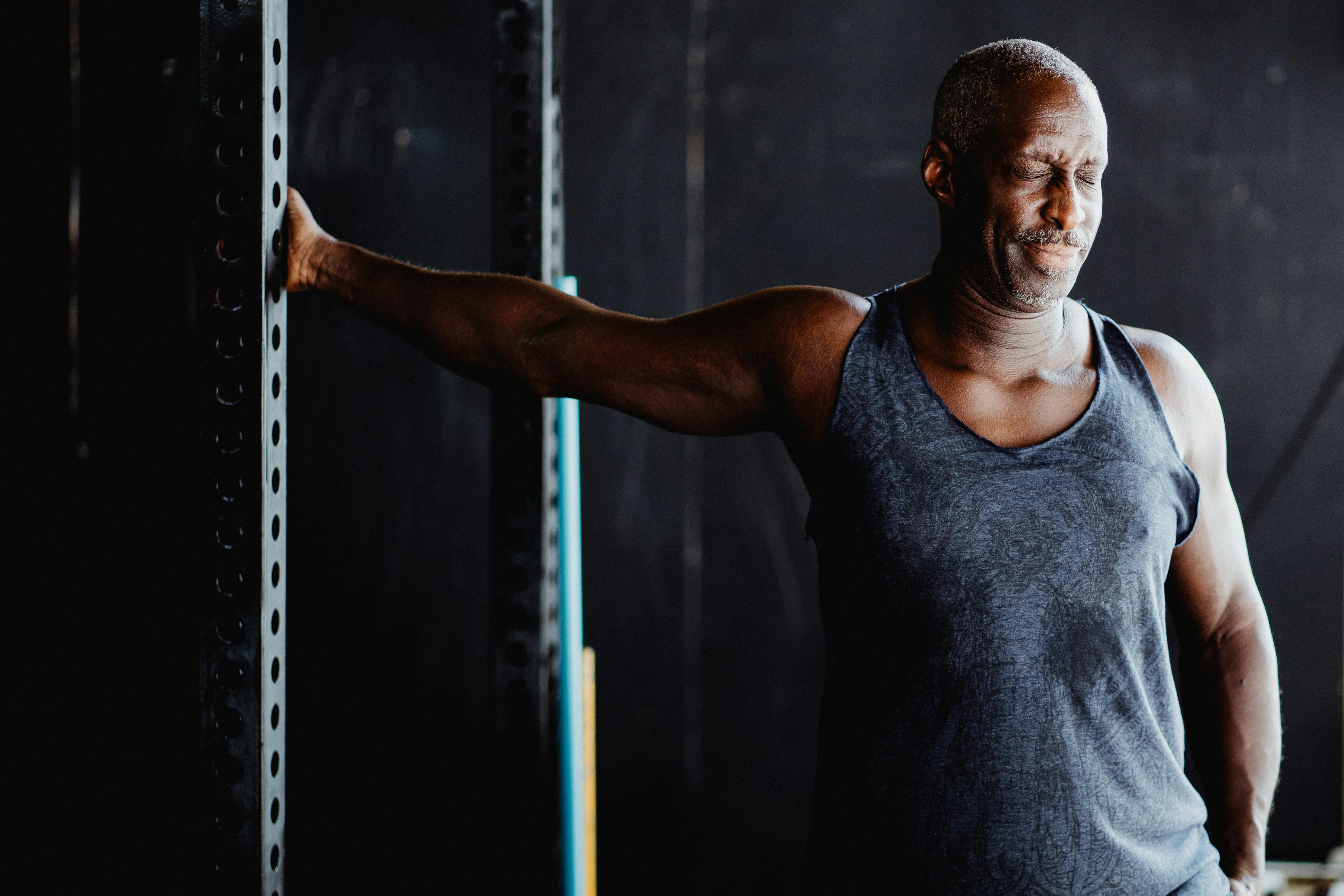Effective Exercises to Enhance Your Rear Shoulder Strength in 2025
In today’s fitness landscape, rear shoulder strength plays a crucial role in overall shoulder health and upper body fitness. The rear deltoids, often neglected in traditional workouts, are essential for maintaining a balanced physique, improving posture, and preventing injuries. Effective shoulder exercises can enhance strength, stability, and muscle coordination, especially in activities that require lifting and rotating motions. In this comprehensive guide, we will explore practical ways to boost your rear shoulder strength through tailored exercises, training tips, and strategies for injury prevention.
Why focus on your rear shoulders? Strengthening these muscles not only supports a strong back but also contributes to better performance in various sports and physical activities. From rehabilitation after injuries to enhancing workout performance, strengthening the rear shoulder can lead to significant gains in athleticism and durability.
We’ll cover essential exercises tailored for both beginners and advanced fitness enthusiasts, highlighting their benefits, proper techniques, and common mistakes to avoid. Our roadmap will guide you through understanding the importance of shoulder strength, effective training methods, and best practices for achieving your fitness goals.
Key Takeaways:
- Understanding the role of the rear deltoids.
- Effective shoulder workouts to enhance strength.
- Practical tips for safe and effective training.
Essential Guide to Effective Rear Shoulder Exercises
Understanding the Rear Shoulder Muscles
The rear shoulders, or posterior deltoids, are part of the shoulder complex and play a vital role in various upper body movements. They contribute to shoulder stability, posture, and movement efficiency. Understanding these muscles’ anatomy helps you appreciate their importance in your fitness routine.
These muscles engage during pulling movements, like rows and pulls, making them crucial for functional strength. Weakness in the posterior deltoids can lead to muscular imbalances, increasing the risk of shoulder injuries. Incorporating targeted exercises ensures balanced muscle development, enhancing athletic performance and daily physical activities.
Key Exercises to Include in Your Routine
To effectively target the rear shoulder, a range of exercises should be included in your training regimen:
1. Rear Delt Fly: Using dumbbells, bend forward with a straight back and lift the weights to the side. This isolates the rear deltoid effectively.
2. Face Pulls: Utilize a cable machine or resistance band, pulling towards your face. This exercise not only strengthens the rear delts but also engages the upper back for stability.
3. Bent-Over Rows: This classic strength training exercise targets the rear muscles of the shoulder while also working the back.
Incorporating these exercises will enhance overall shoulder strength, stability, and functionality.
Warm-Up and Stretching Techniques
Before engaging in heavy lifting or high-intensity shoulder workouts, proper warm-up and stretching are essential. Warm-up techniques can improve blood circulation and flexibility, preparing your body for more intense exercises.
Start with dynamic movements that target the shoulder joint, such as arm circles and shoulder shrugs. Following the warm-up, incorporate stretching techniques to enhance mobility—static stretches like the cross-body shoulder stretch can help maintain flexibility and prevent injuries.
Creating a Personalized Training Plan
Assessing Your Fitness Level
A personalized training plan is vital for achieving your fitness goals in 2025. Assessing your current fitness level will guide you in selecting the right exercises, sets, and repetitions for your routine. Identifying your strengths and weaknesses allows for a balanced approach to shoulder training.
For beginners, starting with bodyweight exercises or light weights is advisable to build foundational strength. Progressively increasing weight and complexity ensures that your muscles adapt and grow without risking injury.
Determining Frequency and Volume
Frequency and volume are crucial in any effective training regimen. For optimal rear shoulder training, aim for 2-3 sessions per week focusing specifically on these muscles. Each session should include a variety of exercises targeting different aspects of rear shoulder strength.
Consider implementing a mix of lower intensity, with higher repetition ranges for endurance, alongside heavier lifting periods aimed at strength building. Balance between shoulder training and recovery to avoid overtraining.
Tracking Progress and Success Indicators
Measuring your progress is essential in maintaining motivation and ensuring continued improvement. Keep track of your sets, repetitions, and weights lifted to observe growth over time. Consider taking photographs and measurements to visually assess your strength gains.
Indicators of success include increased weight capacity, better muscle definition, and improved performance in complementary exercises like bench presses and push-ups. Regular check-ins will keep you engaged and on track toward your fitness goals.
Addressing Common Mistakes in Rear Shoulder Training
Avoiding Overhead Lifts
One of the most common mistakes in rear shoulder training is relying too heavily on overhead lifts without properly engaging the rear deltoids. Exercises like shoulder presses can often engage the front deltoids more than the back. Instead, focus on moves specifically targeting the posterior muscles.
Ensure an even distribution of effort among all shoulder muscles. This balanced approach minimizes injury risks while enhancing overall muscular development.
Balancing Strength and Flexibility
An effective training program encompasses both strength training and flexibility exercises. Overly tight muscles can lead to improper movements and increase injury risks. Regularly incorporating stretching into your routine can improve recovery and enhance performance.
Strive for a balance whereby you prioritize mobility alongside your strength exercises, leading to a more well-rounded fitness approach.
Reading Your Body’s Signals
Listening to your body is crucial in avoiding injury and maximizing training results. If a particular movement causes pain or discomfort beyond typical muscle fatigue, it’s essential to adjust your technique or seek professional guidance.
Incorporating adequate rest days is integral to a successful fitness plan. Providing your body time to recover allows for muscle building and reduces the risk of injury.
Incorporating Rear Shoulder Exercises into Your Fitness Program
Functional Training Approaches
Functional training encompasses exercises that mimic everyday movements to improve overall strength and stability. Integrating rear shoulder workouts within functional training can enhance your overall athletic performance.
This approach not only builds muscle but also translates to better performance in sports and daily activities. By adopting functional exercises, you will create a more versatile and effective fitness regimen that engages the entire body.
Utilizing Fitness Trends of 2025
As fitness trends evolve, it’s essential to stay informed on methods and techniques that enhance physical training. Current trends focus on improving overall muscle balance and injury prevention, with an emphasis on personalized training programs.
Consider engaging with a personal trainer or participating in fitness classes focusing on shoulder training. These sessions can provide valuable insights and ensure that you are using proper form and technique.

Nutrition and Recovery Strategies
Nutrition plays a pivotal role in supporting your training efforts. Proper fuel is necessary for muscle recovery and growth. Focus on a balanced diet rich in protein, healthy fats, and carbohydrates to support muscle regeneration.
Additionally, maintain hydration and consider supplements like protein powders after workouts to aid recovery. Understanding that nutrition and training go hand in hand is vital for achieving optimal results.
Q&A: Your Rear Shoulder Training Concerns
What are the best exercises for beginners focusing on rear shoulders?
Beginners can start with simple exercises like rear delt flyes and band pull-aparts. These movements engage the rear delts effectively without requiring heavy weights, promoting muscle growth and stability.
How can I prevent injuries during shoulder training?
Injury prevention starts with proper warm-up, using appropriate weights, and focusing on form. Additionally, incorporate flexibility exercises and ensure adequate rest between workouts.
How often should I train my rear shoulders for optimal results?
Train your rear shoulders 2-3 times a week, allowing for recovery between sessions. Ensure that you vary your routines to prevent overuse injuries and promote balanced muscle development.

In conclusion, enhancing your rear shoulder strength is achievable through consistent practice, proper exercise selection, and a balanced approach to training and nutrition. By focusing on targeted exercises and integrating these methods into your fitness program, you can develop strong and resilient shoulders for a healthier future.
For more insights on effective training techniques, check out additional resources on shoulder training and fitness programs at Talk to Me and discover more at Fitness Tips.
